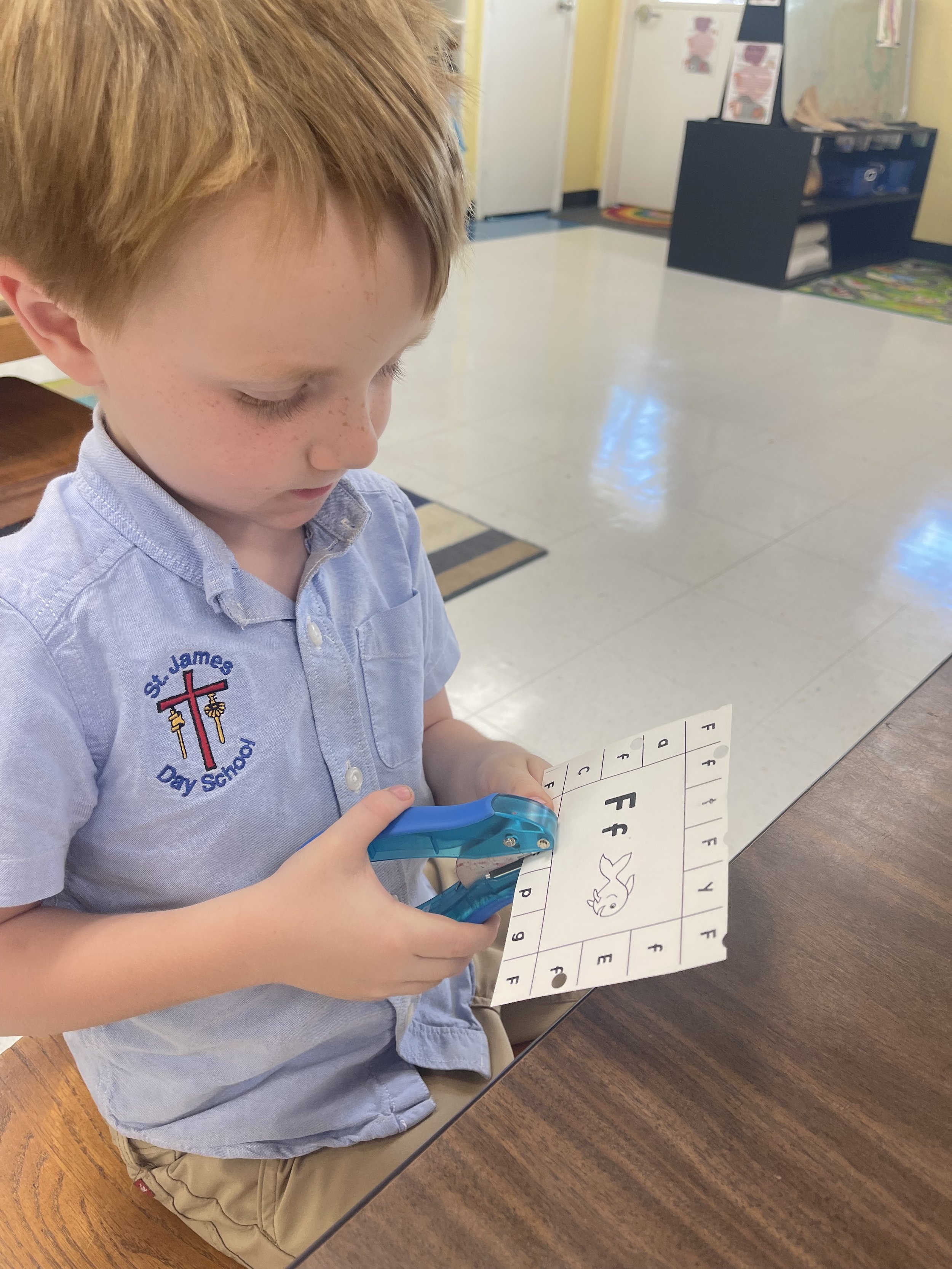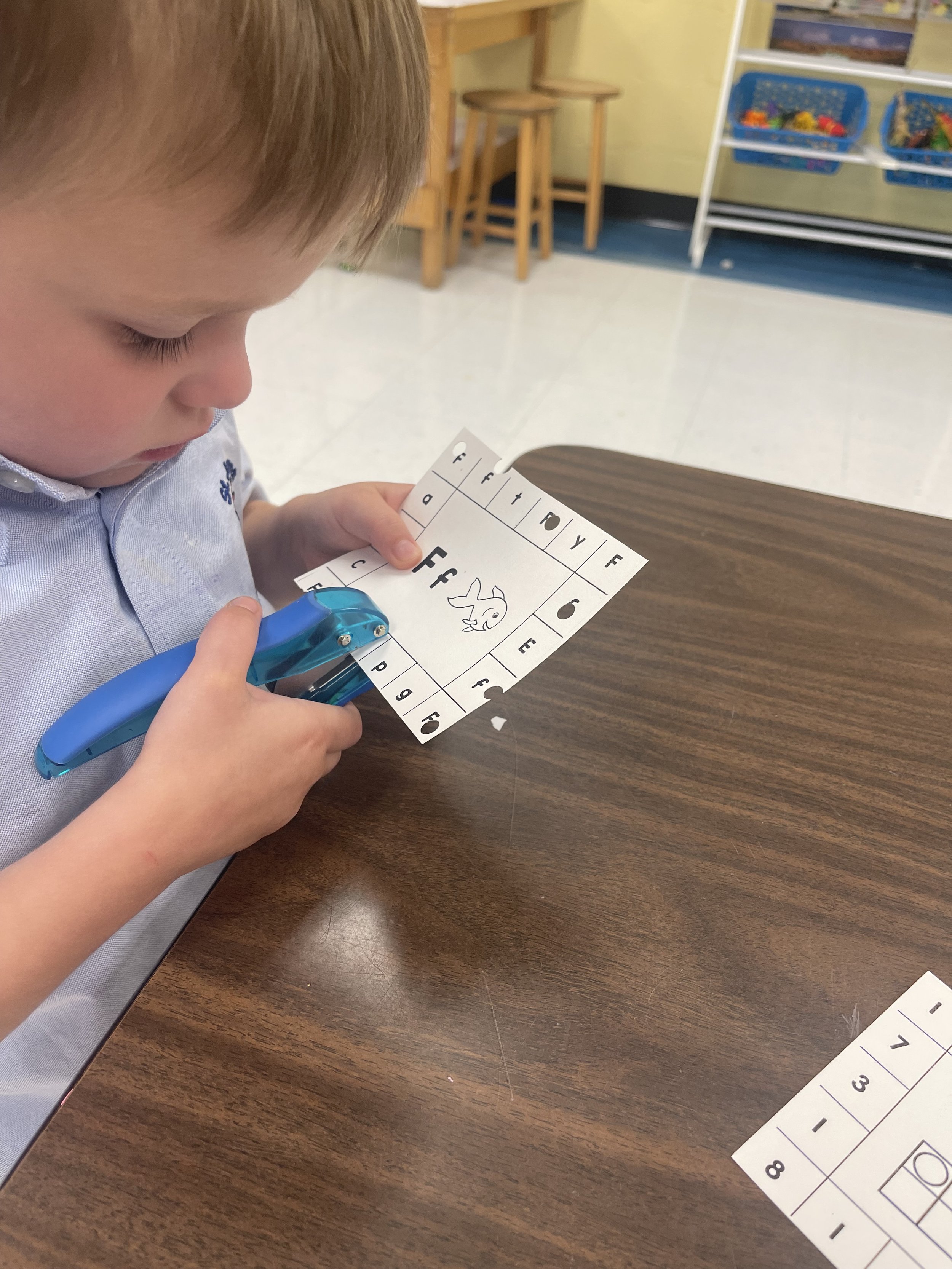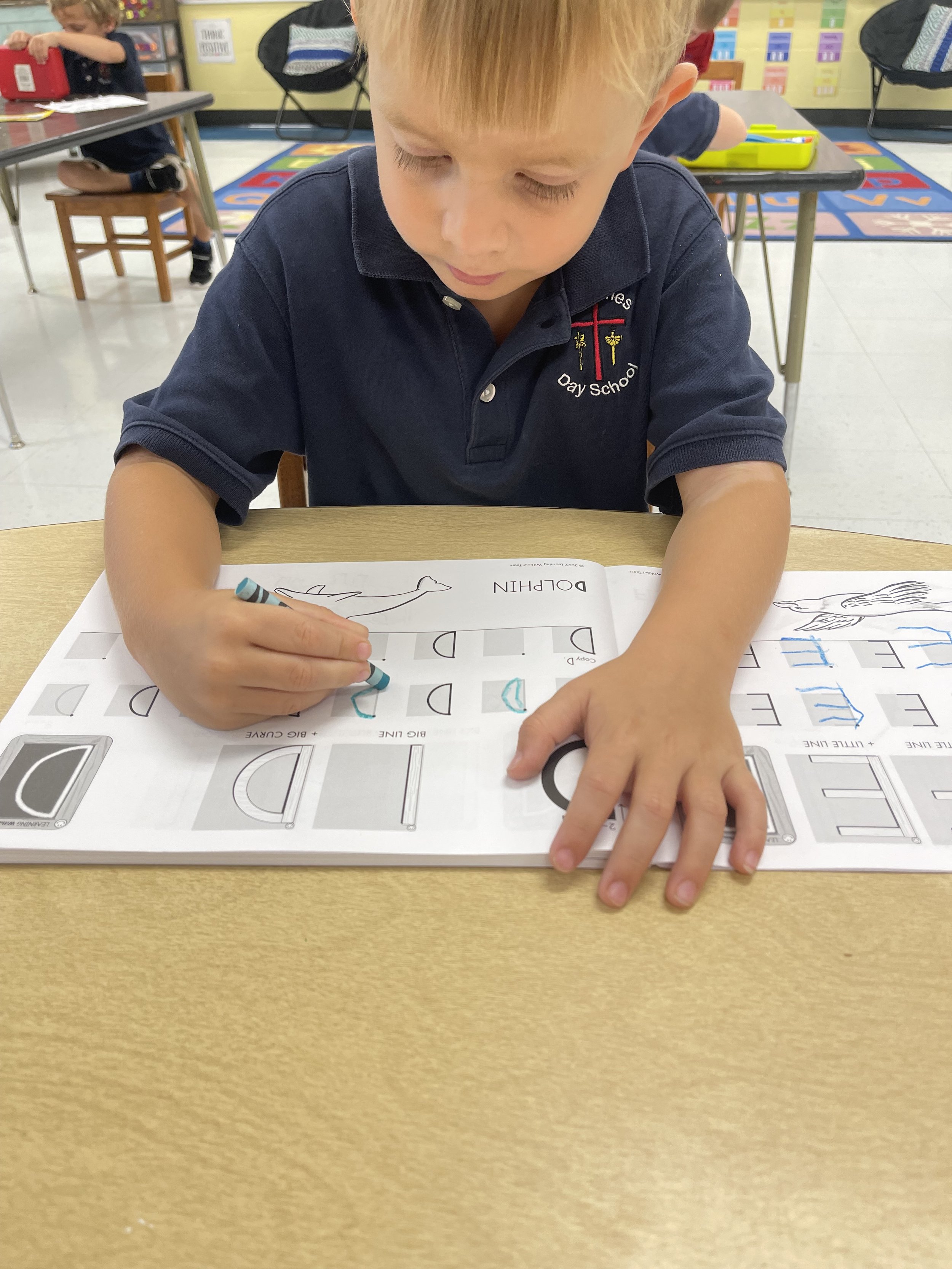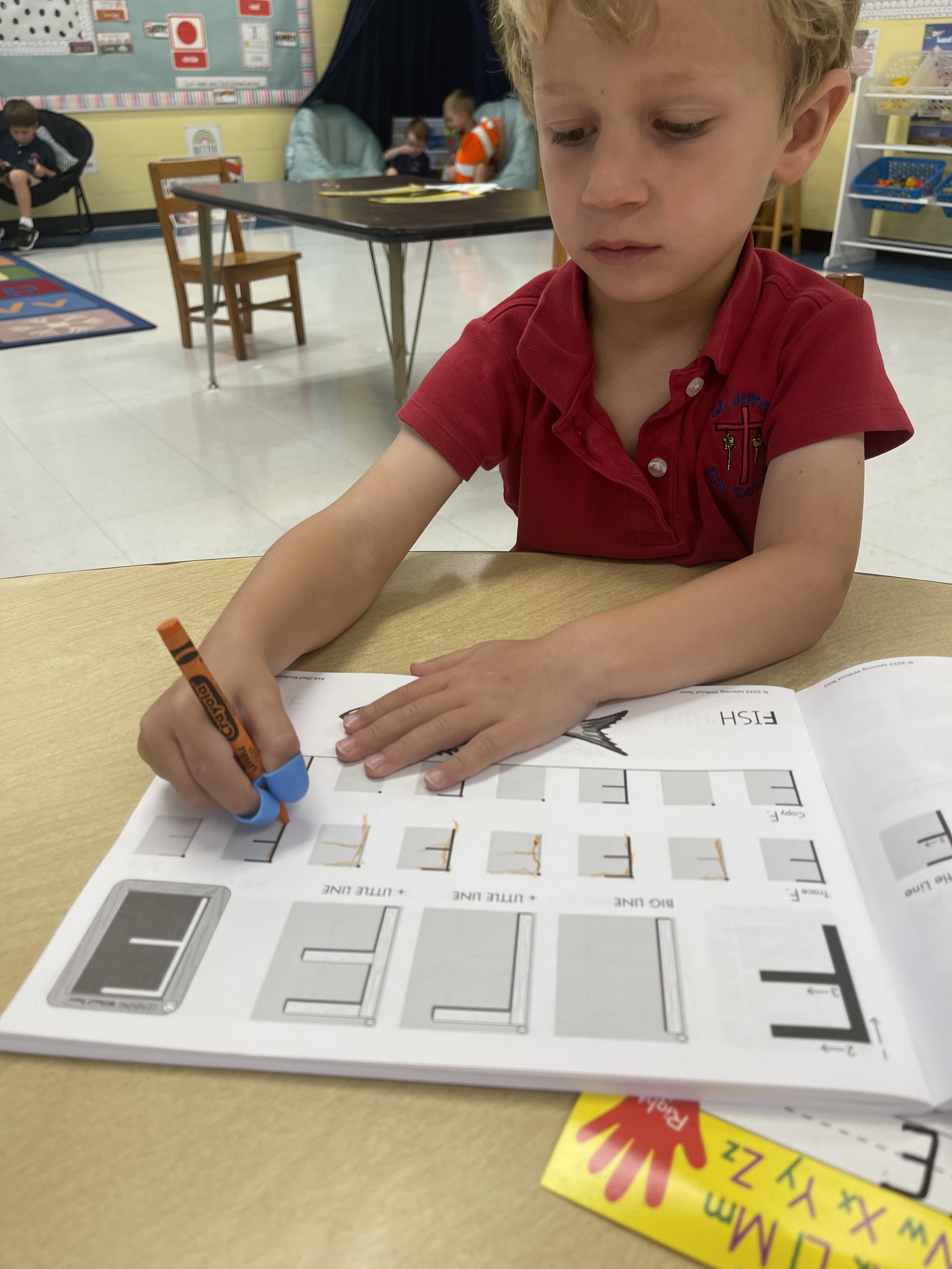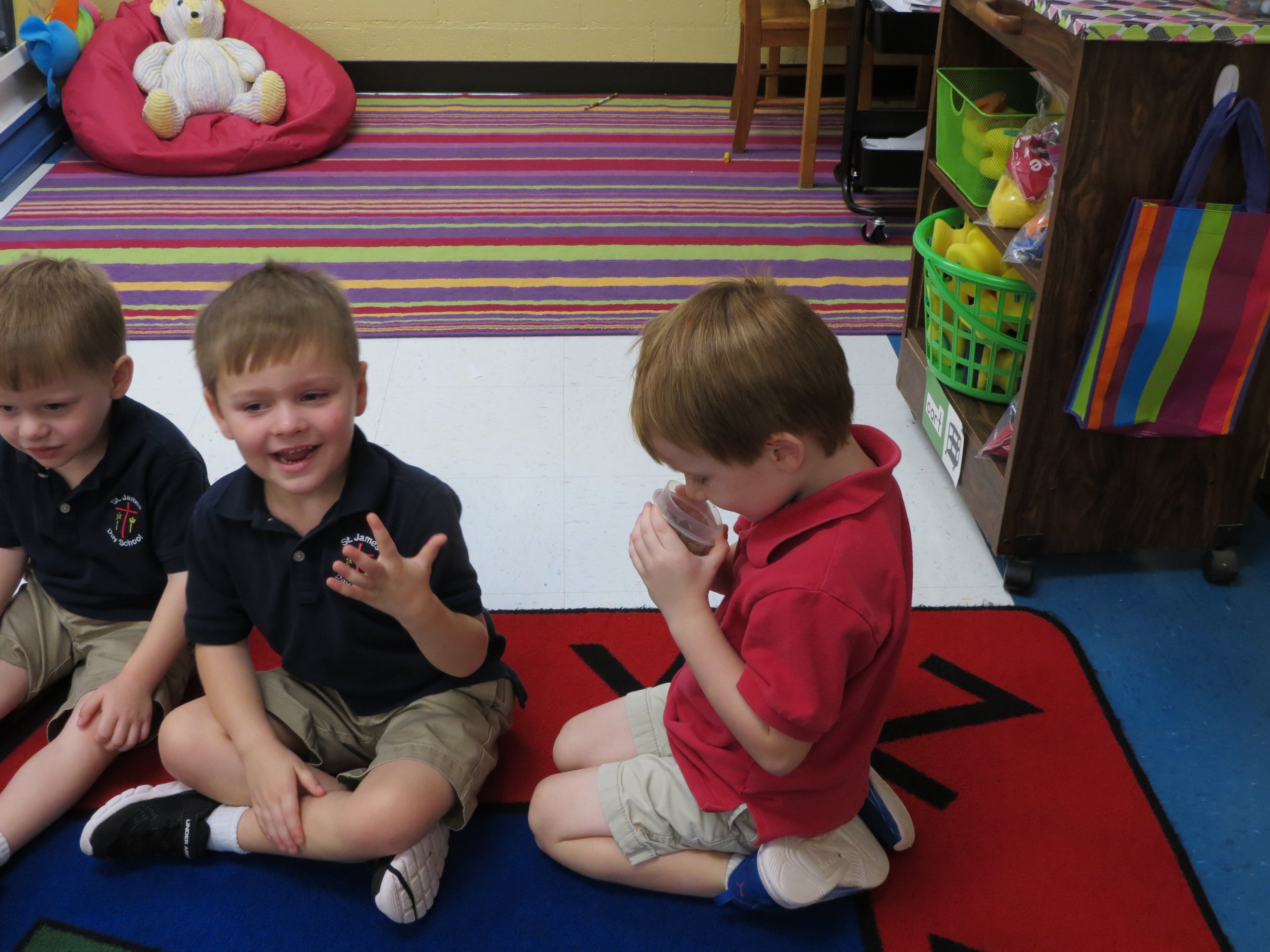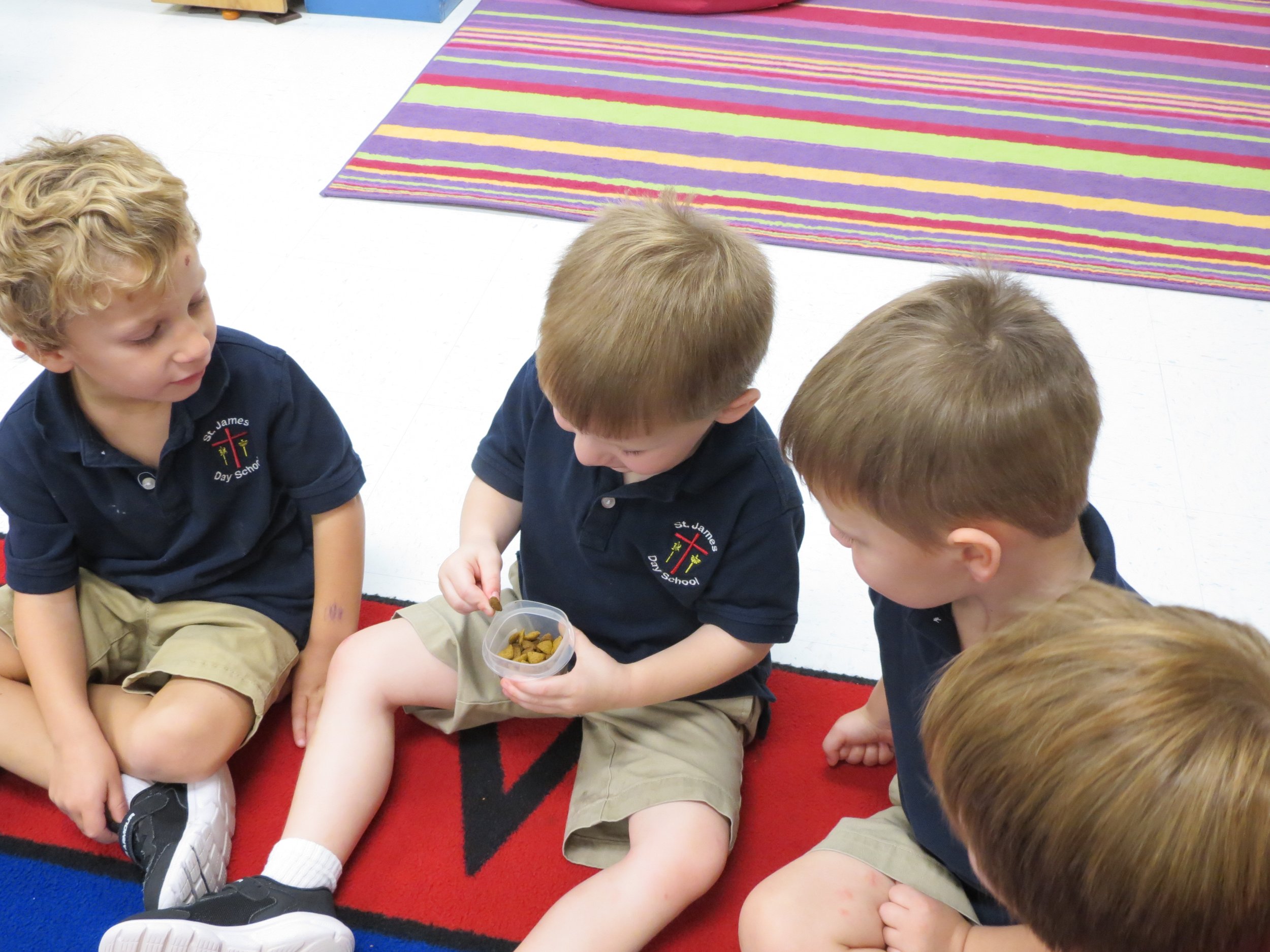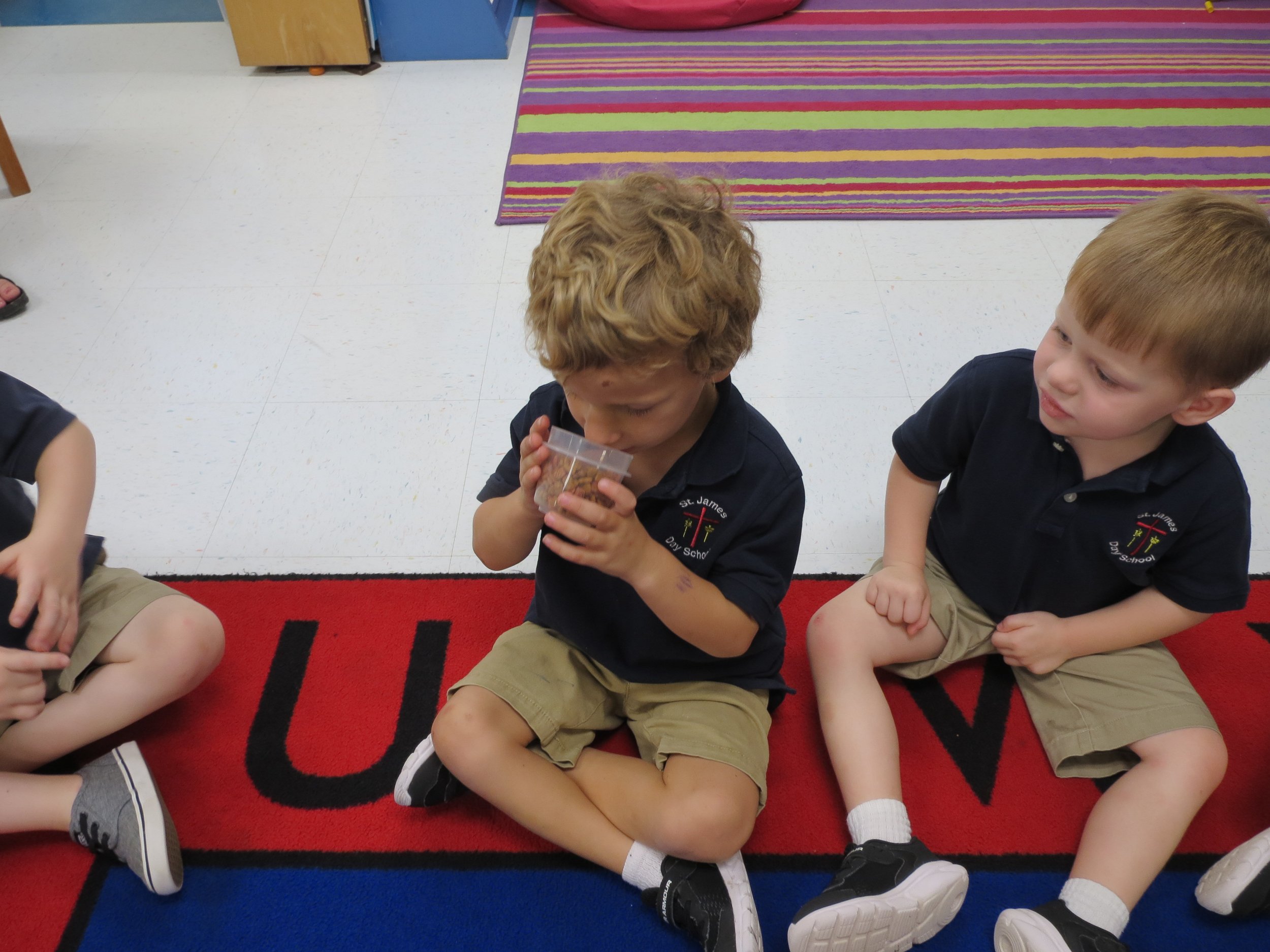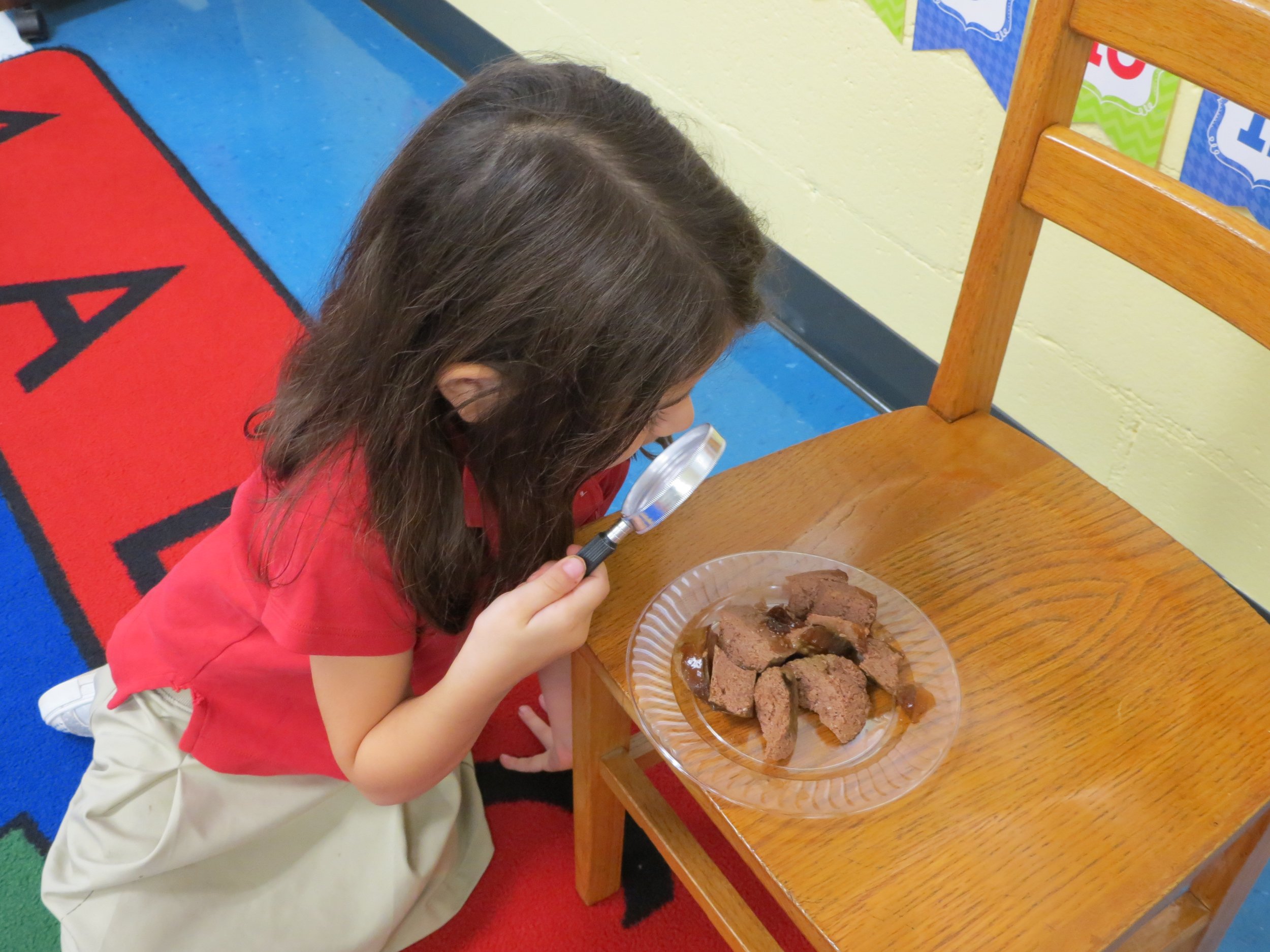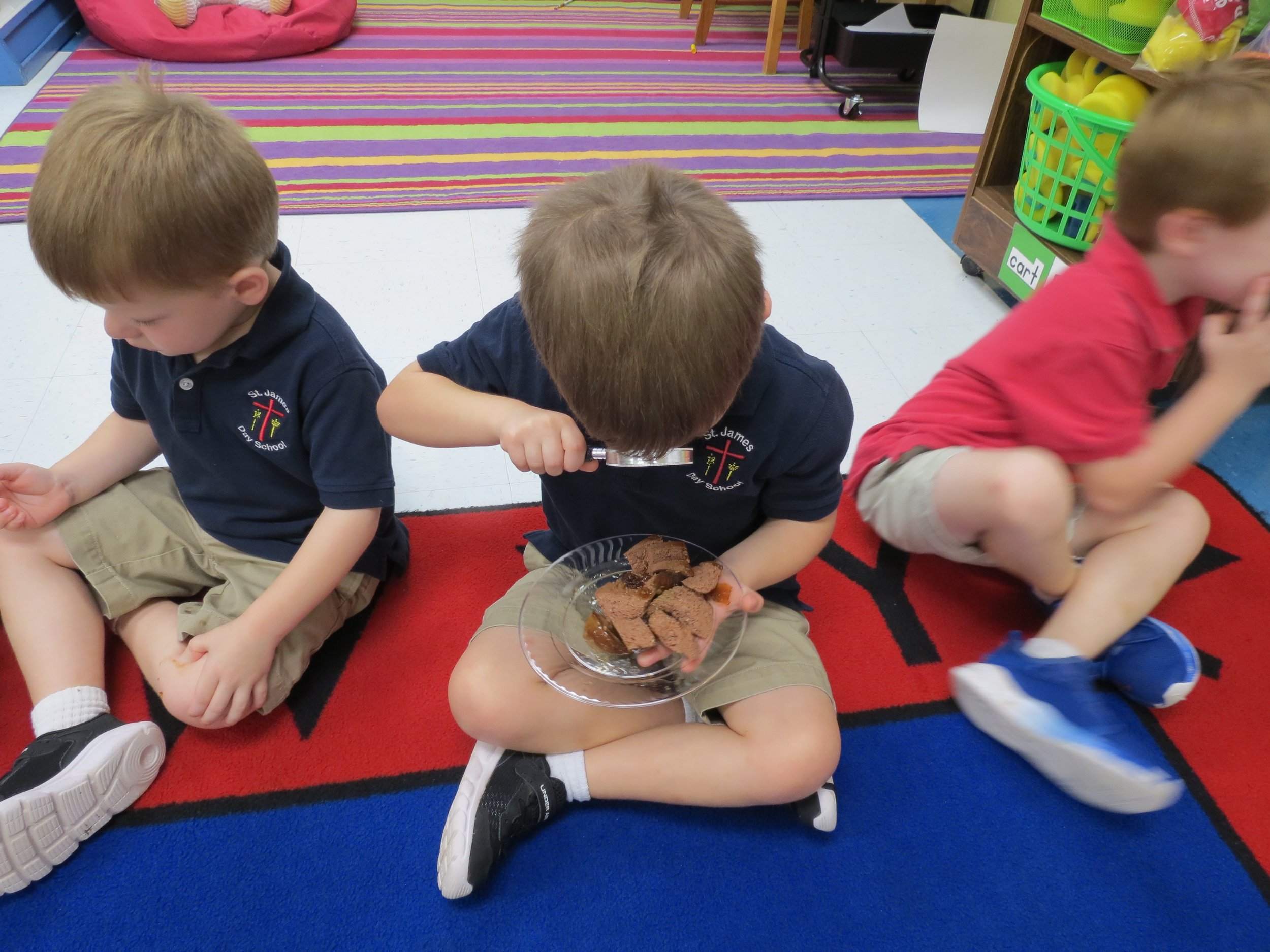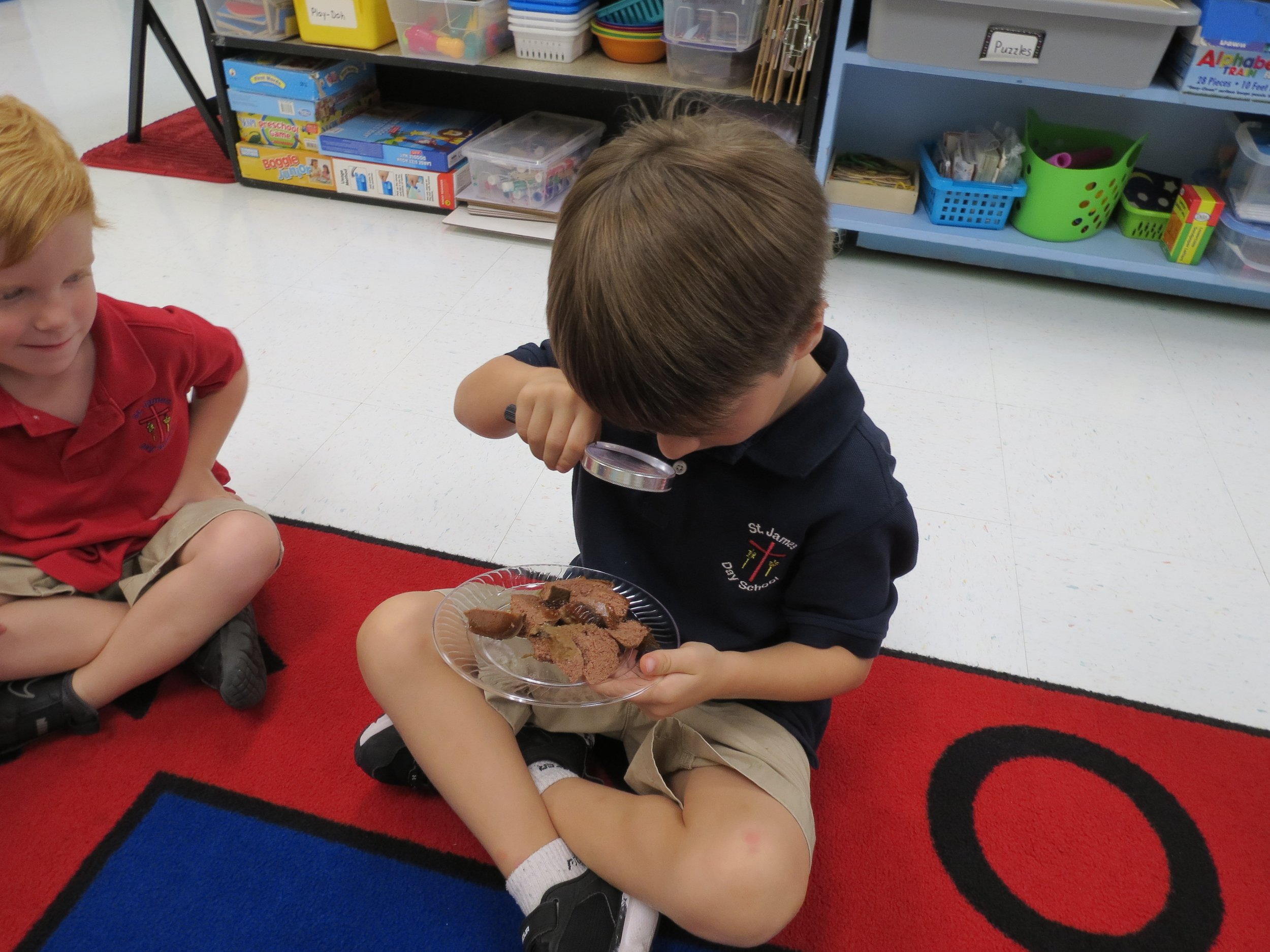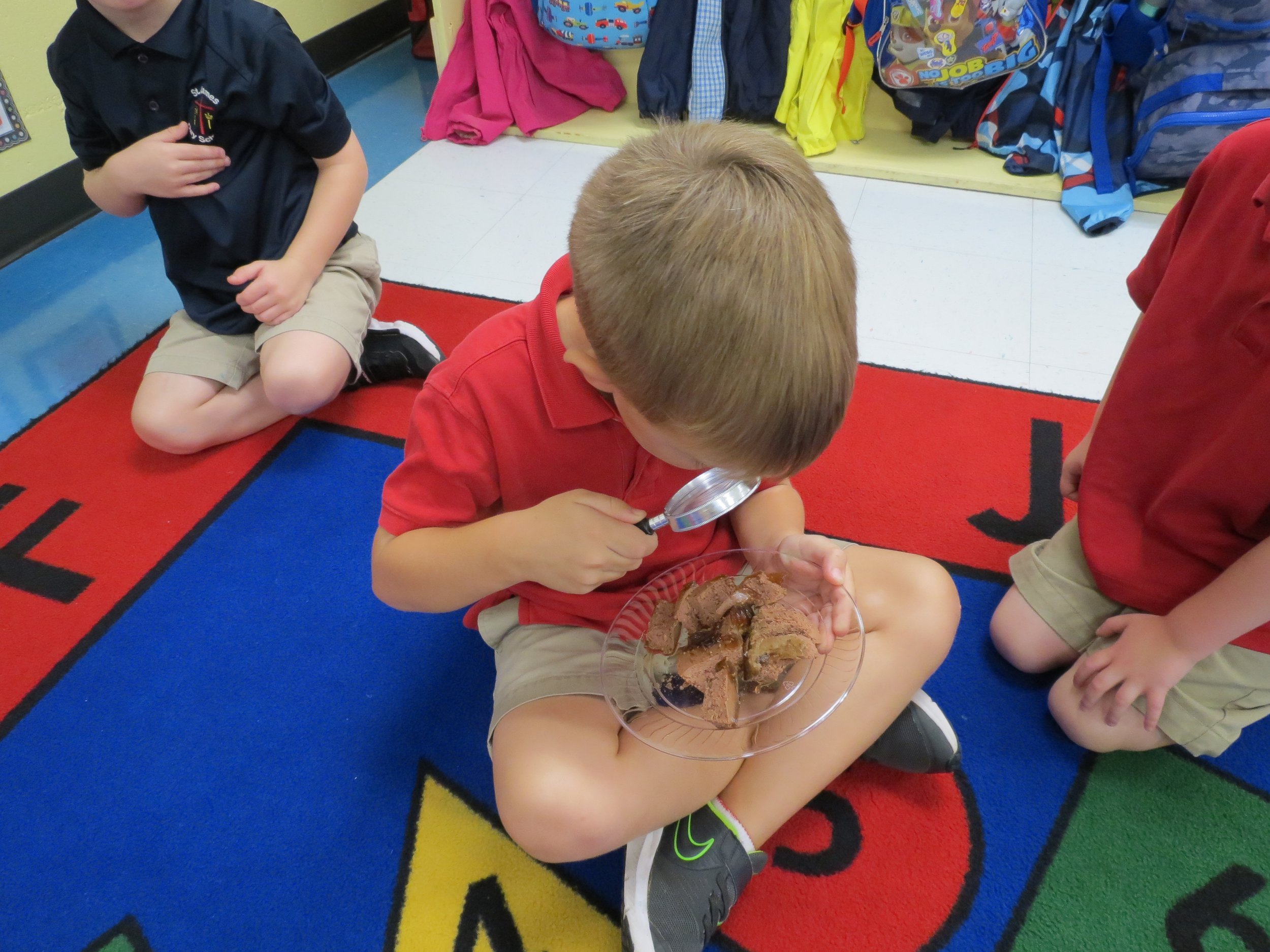Pet Study
Our class pet, Chilly, gets to go home with a child each weekend. Parents and students can write notes about their time with Chilly and add pictures, drawings, or anything they want. This is such a fun way to start our Monday mornings, reading about Chilly’s weekend adventures with everyone.
Alphabet Punch Cards
Using a hole punch is a great way for students to develop their hand strength and their hand-eye coordination. Most children love it, too. If the holes fall out onto the table or floor, picking them up allows children to refine their pincer grasp as well!
Handwriting Without Tears
Part of Pre-Ks curriculum is Handwriting Without Tears and we started working in our Kick Start Kindergarten workbook. We teach in the following developmental order: vertical and horizontal, magic C, big and little curves, and diagonals. We begin with capital letters as a group, seperate from lowercase. Instead of teaching 52 letter symbols with different sizes, positions and confusing starting places, we divide and conquer and start with 26. This week we started with F. The reason we start with F is because of the simplicity with lines and the amount of steps it takes to make the letter.
The students got a chance to examine the differences in dry and wet dog/ cat food.
CLASSIFYING
Exploration of objects, expanding knowledge of the world, and increased language skills contribute to children's ability to classify. When children can classify they can organize their experiences and manage enormous amounts of information that can be retrieved later. The ability to classify is important for learning and remembering. It supports the development of logical thinking. I gave the children several pictures of animals and had them decide if they were animals people always, sometimes, or rarely had as pets. We then played a game where the children had to determine if this is a domesticated or wild animal.






